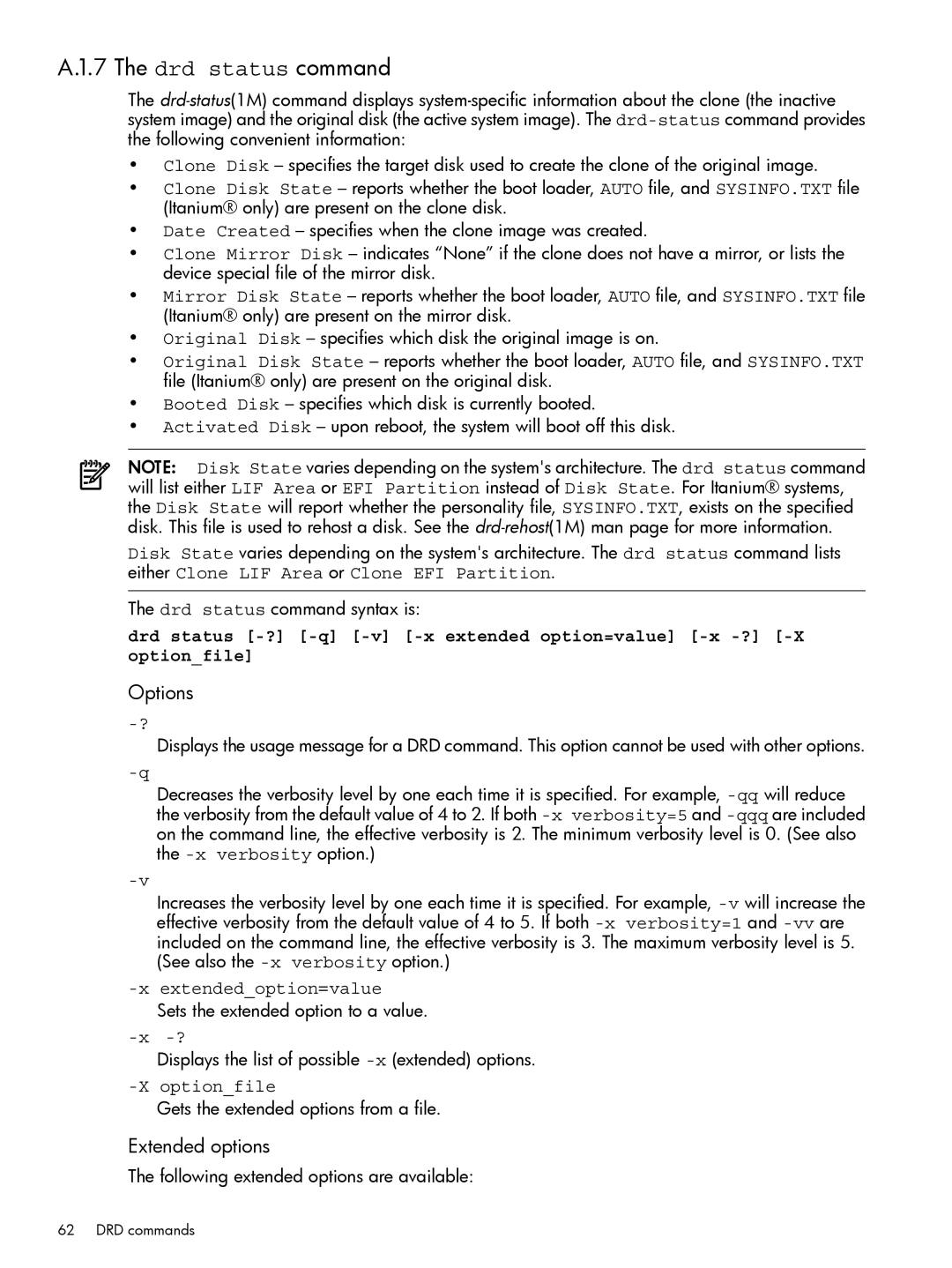
A.1.7 The drd status command
The
•Clone Disk – specifies the target disk used to create the clone of the original image.
•Clone Disk State – reports whether the boot loader, AUTO file, and SYSINFO.TXT file (Itanium® only) are present on the clone disk.
•Date Created – specifies when the clone image was created.
•Clone Mirror Disk – indicates “None” if the clone does not have a mirror, or lists the device special file of the mirror disk.
•Mirror Disk State – reports whether the boot loader, AUTO file, and SYSINFO.TXT file (Itanium® only) are present on the mirror disk.
•Original Disk – specifies which disk the original image is on.
•Original Disk State – reports whether the boot loader, AUTO file, and SYSINFO.TXT file (Itanium® only) are present on the original disk.
•Booted Disk – specifies which disk is currently booted.
•Activated Disk – upon reboot, the system will boot off this disk.
NOTE: Disk State varies depending on the system's architecture. The drd status command will list either LIF Area or EFI Partition instead of Disk State. For Itanium® systems, the Disk State will report whether the personality file, SYSINFO.TXT, exists on the specified disk. This file is used to rehost a disk. See the
Disk State varies depending on the system's architecture. The drd status command lists either Clone LIF Area or Clone EFI Partition.
The drd status command syntax is:
drd status
Options
Displays the usage message for a DRD command. This option cannot be used with other options.
Decreases the verbosity level by one each time it is specified. For example,
Increases the verbosity level by one each time it is specified. For example,
Sets the extended option to a value.
Displays the list of possible
Gets the extended options from a file.
Extended options
The following extended options are available:
62 DRD commands
